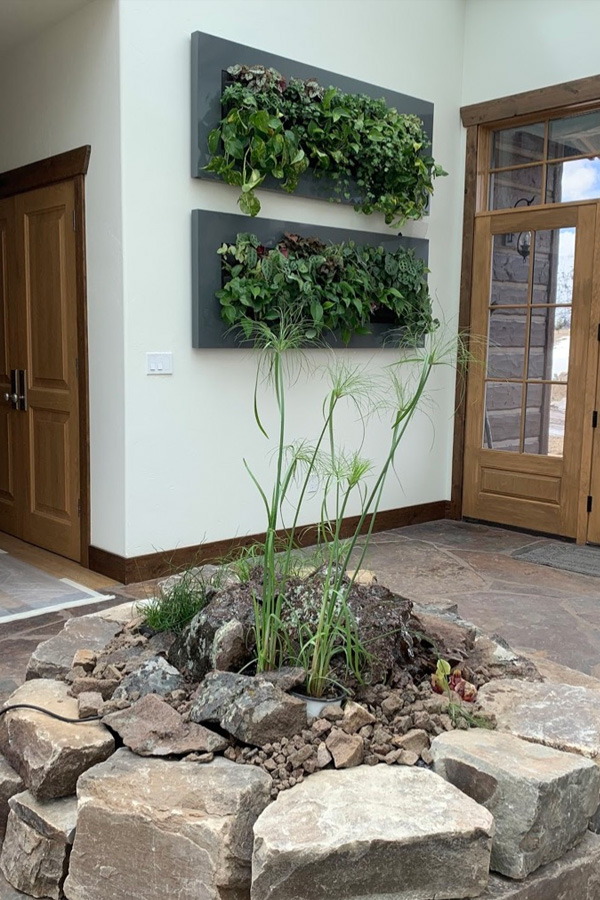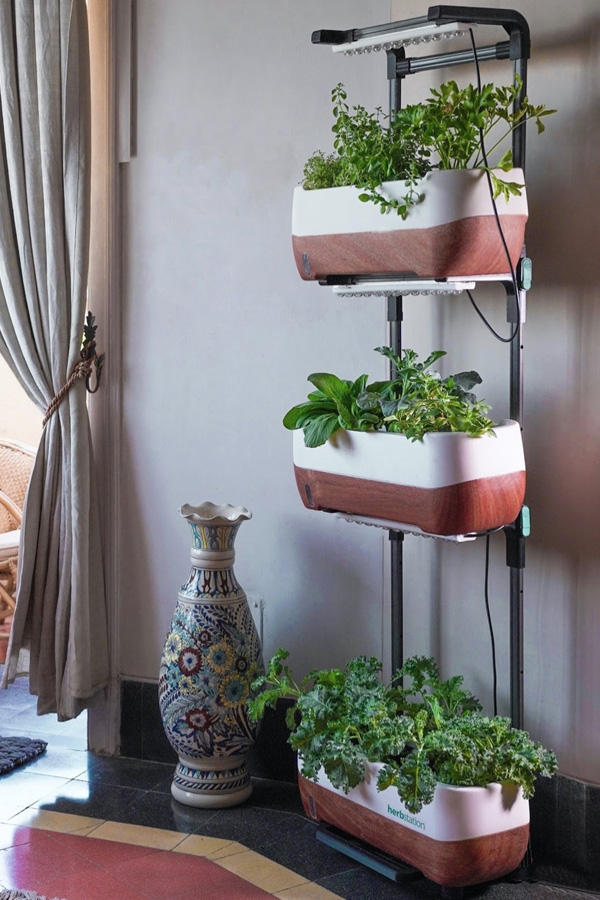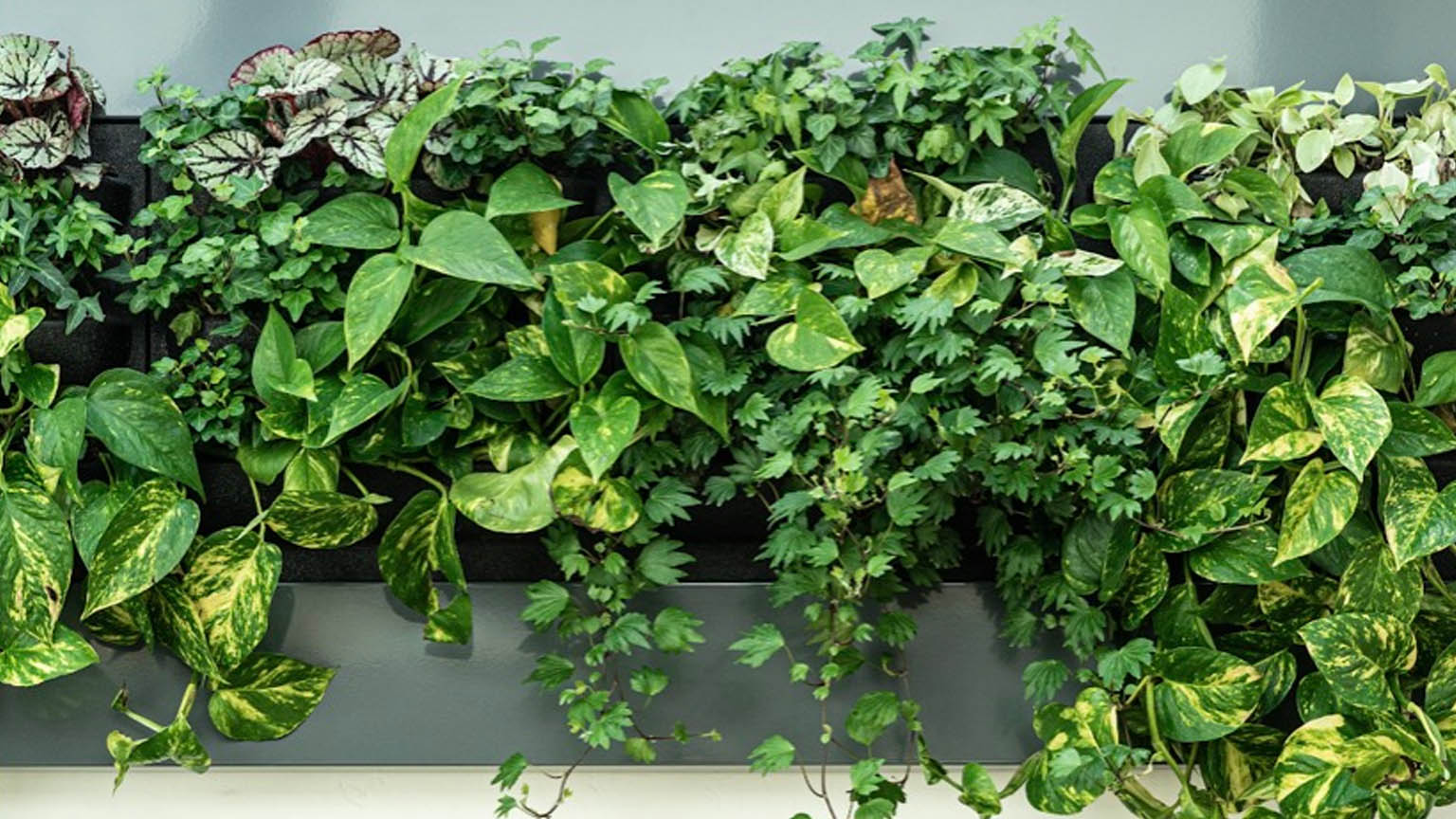By Brooke Constance White
Plants and gardening are not a cure-all for the twists and turns and the bumps in the road of life, but they can help make the journey a bit easier. That’s not just anecdotal—research in peer-reviewed psychology journals show that living and working amongst plants and getting your hands in the soil decreases stress, increases productivity, helps keep you grounded and improves your mood!
Andy Blanchford, CEO of Bozeman’s Blanchford Landscape Group, says he’s seen the effects firsthand and that having a daily connection with nature is more important than ever with so many people working from home.
“The research is really showing that being around plants makes people happier and feel better,” Blanchford said. “Not only that, but they filter the air and improve our overall health and wellbeing.”
And while all the research is there to back this up, sometimes access and space is the struggle—finding a plot of land to call your own. Although we generally think of traditional green space like a lawn as the main means to garden, it’s time to challenge that line of thinking. If you’re living in an apartment or condo with just a courtyard, patio, balcony or no outdoor space whatsoever to call your own, vertical growing may just be the perfect solution.


A living wall consists of a frame with cubes in which to fit small pots, creating a mass of plant material as well as a unique design element in your home. PHOTO COURTESY OF BLANCHFORD DESIGN GROUP
Vertical growing is a gamechanger in small spaces because it utilizes your vertical space. Growing up versus out means you don’t need any green space. In fact, some methods don’t even require soil! All you need is a very small footprint—about 2 feet by 2 feet—that could either fit a vertical growing tower kit or a more DIY approach, such as stacked flower pots or other vessels that could hold soil or another growing medium.
Jeff Pernell, the owner of Missoula’s Galactic Farms, is all about gardening in small spaces. He likes the challenge. And although there are great kits that you can purchase that have everything in them to create a vertical growing system, Pernell says there are plenty of ways to utilize items you already have in your home.
One of the systems he put together uses dresser drawers filled with dirt and stacked on a patio. Another creative approach would be a ladder with planting boxes attached to each rung, or a stack of pots arranged at different angles held up by a stake. You could even use an over-the-door cloth shoe organizer if you wanted! If you’re going the DIY route, use your imagination! What can you stack or attach to the wall or ceiling that could hold some plants or seedlings?
If you prefer to start with a kit, Pernell recommends the Garden Tower Project, a small barrel-shaped tower with a virtually maintenance-free continuous vermicompost column. The tower utilizes worm composting to break down kitchen scraps and distribute the castings throughout the tower to nourish the plants. The soil around the column provides steady moisture and temperature for a resilient worm habitat. The best part? It can grow up to 50 plants in 4 square feet nearly anywhere.
Other great options include a hydroponic self-watering, self-fertilizing growing tower called the Farmstand from Lettuce Grow. Another company, Tower Garden, also offers a grow tower that utilizes aeroponics, which is a form of hydroponics, but the plants are grown in an air or mist environment instead of soil. All of these grow towers grow much more in minimal space and can be used both outdoors in natural light, or indoors using artificial grow lights.
While you can grow pretty much anything vertically, Pernell recommends starting with leafy greens like lettuce and then moving on to basil and other leafy herbs. Once you’ve mastered those, move on to tomatoes and strawberries.
If you don’t have any ground space to spare or have your vision set more on houseplants versus produce, a living wall might be a good option, Blanchford says. A living wall consists of a frame with cubes in which to fit small pots. This creates a vertical mass of plant material and also a fun design element—you can swap the pots in and out or move them as desired. They’re easy to manage and can be as large or as small as you’d like and there are plenty of tutorials available—Blanchford Landscape Group also designs and builds them for clients.


When you have limited space—indoors or out—you can get creative with stacked plant features, making room for a means to grow fresh produce or colorful flowers. PHOTO BY ALTIFARM VIA UNSPLASH
Walls or windows can be used to hang plants as well—whether it’s a window box or a deep frame with wire for a succulent garden. There are also a variety of plants that love to hang and grow climbing vines that you can drape or support on a wall or decorative trellis. For those who enjoy indoor trees, an espalier is another possibility. An espalier is a tree that is trained to grow flat against a wall and out horizontally. Although it takes a little pruning maintenance, you have a tree that looks two-dimensional and takes up very little space in your home!
Once you set aside the traditional garden mindset of a spacious backyard and endless sunny days, the possibilities of gardening in the space you have are endless. Your homegrown veggies are waiting—go vertical and use your imagination!
Your indoor GROW-cabulary
Vertical Growing – Vertical growing is when you plant something, whether it’s fruit, vegetables, flowers or houseplants, in vertically stacked layers to make smaller spaces more productive. This is often done indoors, using artificial sunlight. Soil can be used, but it often utilizes soilless growing methods like hydroponics or aquaponics.
Aquaponics – Aquaponics is a method of growing that combines raising fish in tanks with soilless plants. In aquaponics, the nutrient-rich water, fish and their waste offer a natural fertilizer for the plants and in turn, the plants help clean the water for the fish.
Hydroponics – Hydroponics is a soilless method of growing plants in an inert medium like coco coir, clay pellets, small rocks or perlite. The plant is fed a solution of micro-nutrients similar to what it would find if planted in soil. Just about any kind of plant can be grown hydroponically, including veggies, herbs, fruits and flowers.
Aeroponics – Aeroponics is an advanced form of hydroponics in which plants are grown in an air or mist environment instead of soil. Aeroponic systems use water, liquid nutrients and a soilless growing medium to efficiently grow produce.








